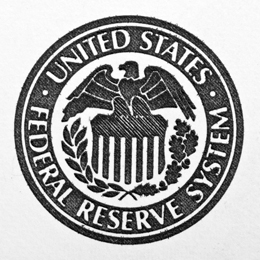 Yesterday, we discussed what the natural interest rate should be, arriving at about 5 percent on a nominal basis, assuming 2-percent inflation. That seems like a reasonable number over time, given that the Federal Reserve has committed to an inflation target of 2 percent. But with interest rates currently far below 3 percent, there’s clearly a gap between what the rate should be and where it is now.
Yesterday, we discussed what the natural interest rate should be, arriving at about 5 percent on a nominal basis, assuming 2-percent inflation. That seems like a reasonable number over time, given that the Federal Reserve has committed to an inflation target of 2 percent. But with interest rates currently far below 3 percent, there’s clearly a gap between what the rate should be and where it is now.
Which brings us to today’s question: What’s keeping the rate gap open, when will it close, and what happens then? (For those who read yesterday’s post, that’s items 2, 3, and 4.)
No easy answers from the Fed
You’d think this would be a simple question to answer. After all, the Fed has spent trillions of dollars buying securities specifically to keep rates down. Surely it has a detailed explanation for how that works, the extent of the effects, and what happens when it pulls back. Right?
Wrong. A commentary from the Cleveland Fed breaks out the components that make up interest rates. Explanations for low rates include low expected inflation, a decline in the real interest rate to just about zero, and the higher rate that is required for longer time periods, known as the time premium. Absent is any discussion of the effects of quantitative easing.
A discussion of QE from the St. Louis Fed defines and defends it, concluding that the Fed’s program has reduced rates by about 75 basis points, or 0.75 percent, through a lower term premium. For our purposes, we can ignore the details and surmise that, without the Fed’s stimulus, rates would be that much higher—2.28 percent plus 0.75 percent, for a rate on the 10-year Treasury of 3.03 percent. This is still below the 5 percent we would expect.
The remaining gap must therefore come from low expected inflation and a decline in the real interest rate. The real rate, per the Cleveland Fed paper, dropped from at least 1 percent to 0 percent. When that normalizes, which seems to be happening, the 1-percent shift will be added back to the Treasury rate. Inflation expectations are quoted as declining by about 0.5 percent. Adding these two factors to current rates and the QE adjustment, we’re still below the expected 5 percent by about 50 basis points.
So, why the gap?
Given this framework for understanding how interest rates ought to adjust, the end of the Fed’s bond purchases should have pushed rates up. There are two possible reasons why that didn't happen:
- Although the Fed has stopped buying new bonds, it’s still active in the market in a significant way, continuing to reinvest payments and buy bonds to replace the ones that mature. As prices are set at the margin, this may well be suppressing rates.
- Both Japan and Europe have launched their own QE programs. Along with the strength of the dollar, this has made U.S. assets very attractive and is certainly contributing to lower rates. Though the effects of international stimulus wouldn't be as immediate or as large as Fed stimulus on U.S. rates, an effect of around 50–75 basis points certainly seems consistent with the data.
What does this mean for the future?
If ongoing low rates are indeed due to the European and Japanese QE programs, they may continue until those programs end, at which time we may see an uptick of 50–75 basis points. At this point, though, there’s no sign of either of those programs ending soon.
The adjustment for inflation is somewhat more speculative, but economists continue to expect inflation to remain low. I don’t necessarily agree with that, but for today’s purposes, let’s assume they are right, and any increase would be no more than the 50 basis points assumed in the Cleveland Fed analysis.
All of this is speculative, of course, but it gives us some context for understanding why rates are low, what’s keeping them there, and how and when that will change. With the ongoing stimulus by European and Japanese central banks, the absence of inflation, and the attractiveness of U.S. assets, all factors are pointing toward continued lower rates in the near to medium-term future.
We’ll talk about what this means for our investments tomorrow.


 Print
Print


